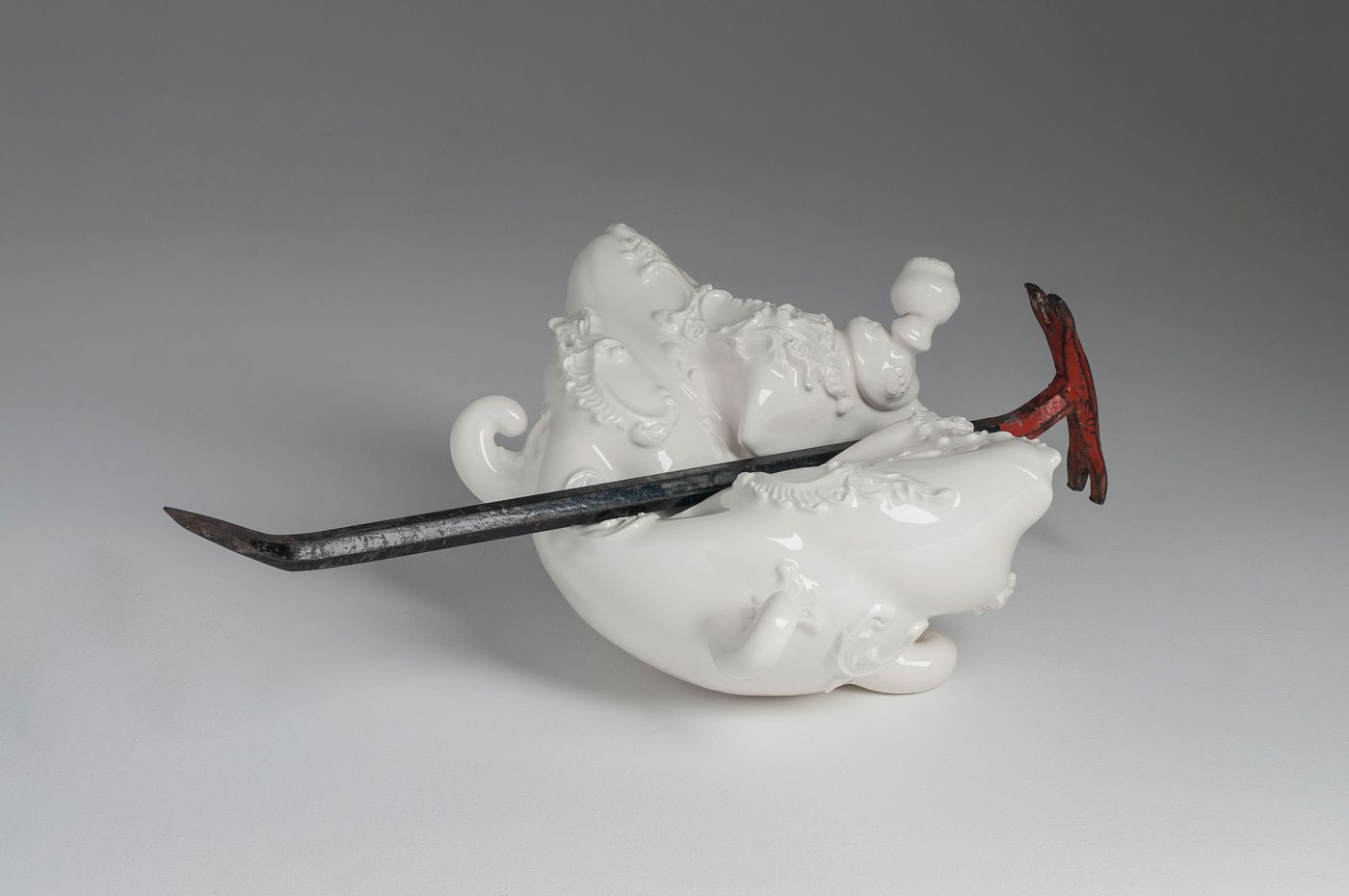
Beautiful Vandalism: Laurent Craste Punishes Porcelain
Words by Sara Panagiotopoulou
Location
Purely decorative objects have been in our visual consciousness as far back as the 18th century. Although they didn't have any function beside the ornamental, they concealed much beneath their glossy exteriors which is a subject that French artist and ceramist, Laurent Craste, has chosen to explore with Abuse, his theatrical collection of porcelain objets d'art that eradicates superfluous perfection."
My research centers on conceptual explorations of the multiple layers of meaning of decorative collectibles, in their sociological and historical dimensions, and also in their ideological and aesthetic ones," he says. In tangible terms, this translates to taking, say, a gilded-edged porcelain urn decorated with delicately painted bouquets of blue flowers on a pristine white background, and making it look as if it has been thrown against a wall, its body flattened out and secured by four screws, its gilded lid still clinging to the shattered rim. Craste aptly describes this as, "subjecting [the objects] to a practice of deconstruction and violent alteration of their formal structures."
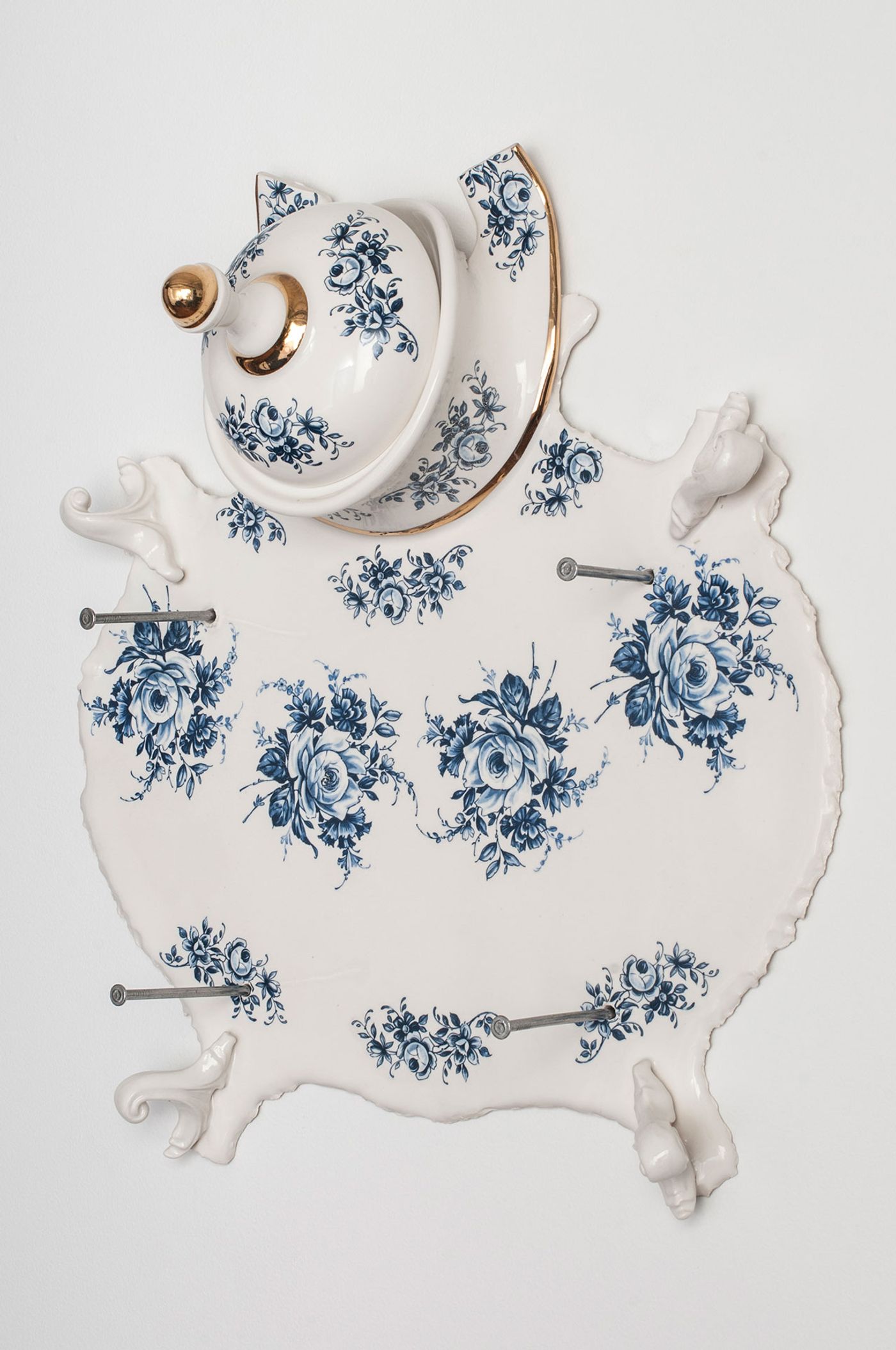
Craste Laurent, Dépouille aux fleurs «Bleu de Delft», 2012. Porcelain, glaze, decals, gold, nails. Edition 1 of 5: 40 x 38 x 14 cm. Permanent collection of the Montreal Museum of Fine Arts.
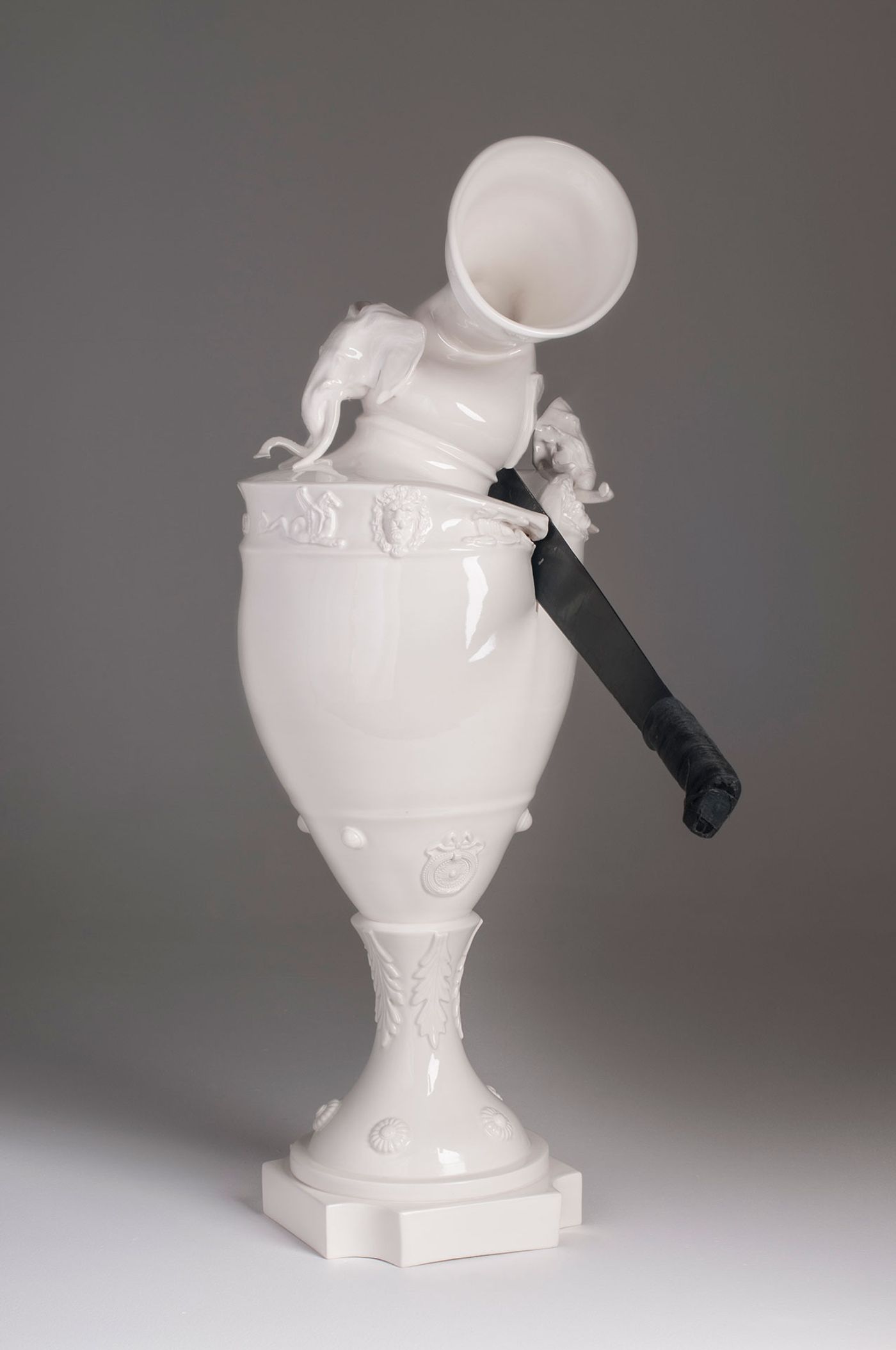
Craste Laurent, Style colonial, 2012. Porcelain, glaze, machete, 86.5 x 31 x 31.5 cm. Claridge collection.
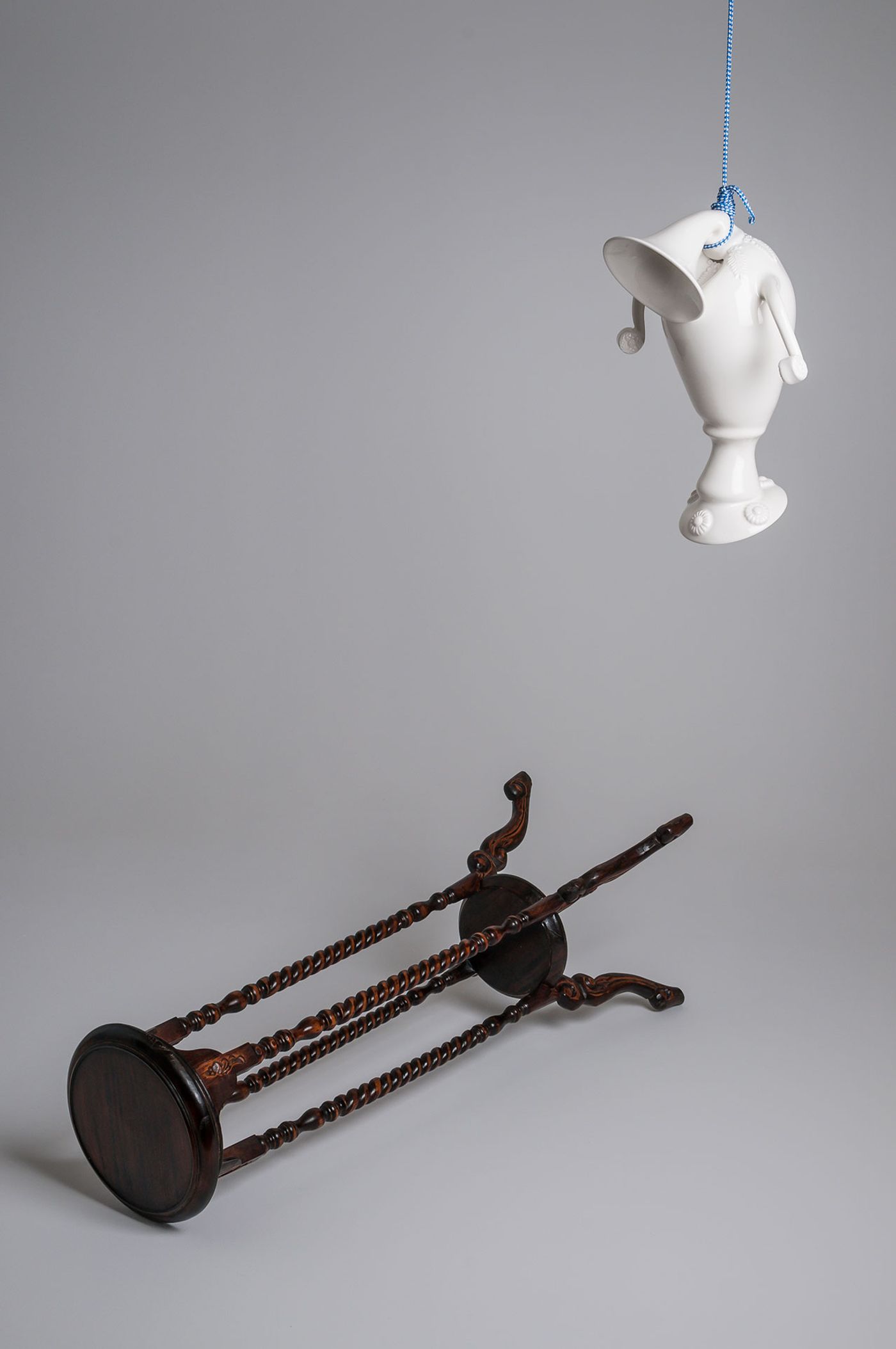
Craste Laurent, La fin d’une potiche I, 2012. Porcelain, glaze, nylon rope, pedestal. Edition 1/5: Vase : 40 x 23.5 x 29 cm; pedestal : 101 x 32 x 32 cm. Permanent collection of the Montreal Museum of Fine Arts.
Interestingly, what at first appears to be a destructive condition the objects were subjected to after they were fired in the kiln, is actually false. As we know, if porcelain is mistreated—for instance, it is struck by a sledge hammer—it instantly breaks into thousands of grainy particles. But in the case of the objects in Abuse, a violation of their perfect forms was what they were created for; the final specimens were never intended to be "perfect," but they were intended to say a lot…
Laurent states that the "vandalism" these objects are subjected to comments on the "ideological destruction" that occurred during revolutions, such as the ten year Chinese Cultural Revolution (1966-1976) or the French Revolution in (1789-1799). These times of unrest forced people to not just question the status quo but to subject it to unrelenting scrutiny which ultimately forced it to change. Exactly like these objects. On the other hand however, Abuse is also Craste's commentary on modern favoritism towards functional, industrial design over design with the mere intention to look pretty, in other words, function crushes beauty, so to speak.
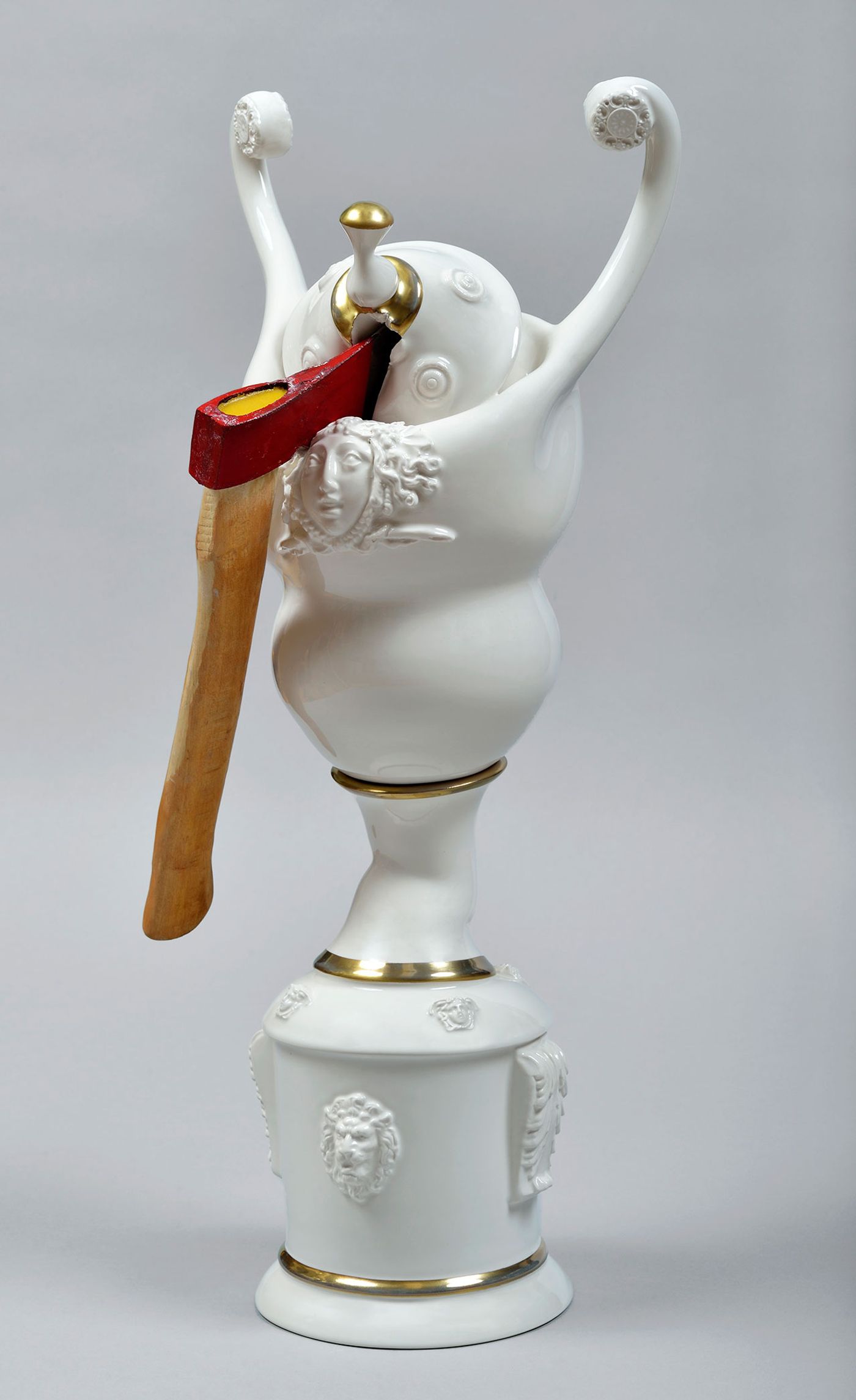
Craste Laurent, Révolution II, 2014 /2015. Porcelain, glaze, gold, axe, 62.5 x 28.3 x 25 cm.

Craste Laurent, Vase Vaudou, 2014. Porcelain, glaze, nails, marble. 41.8 x 21.4 x 22.8 cm.

Craste Laurent, Paire de vases Médicis. Série des scènes pittoresques : Hiroshima et Auschwitz, 2010. Porcelain, glaze, lead pigments, mat burnished gold, marble. 39.1 x 22.7 x 21 cm each vase.
Beyond the visibly shocking, Craste also infuses his art with hidden elements intended to surprise. For instance, a close inspection of a seemingly serene pair of pink, dual handled urns reveals a line of bugs crawling around the gilded-framed central images. In turn, these images don't depict pastoral scenes but rather views of despondency, such as a destroyed castle and a dead shipwrecked migrant washed up onto an unwelcoming beach. Laurent calls this "subject substitution" and it certainly does fulfill its intended purpose: to make a strong statement, saying everything… without uttering a single word.

Craste Laurent, Vase Lampedusa, 2014/2015. Porcelain, glaze, lead pigments, mat burnished gold, marble. 43.2 x 27.1 x 22.5 cm.

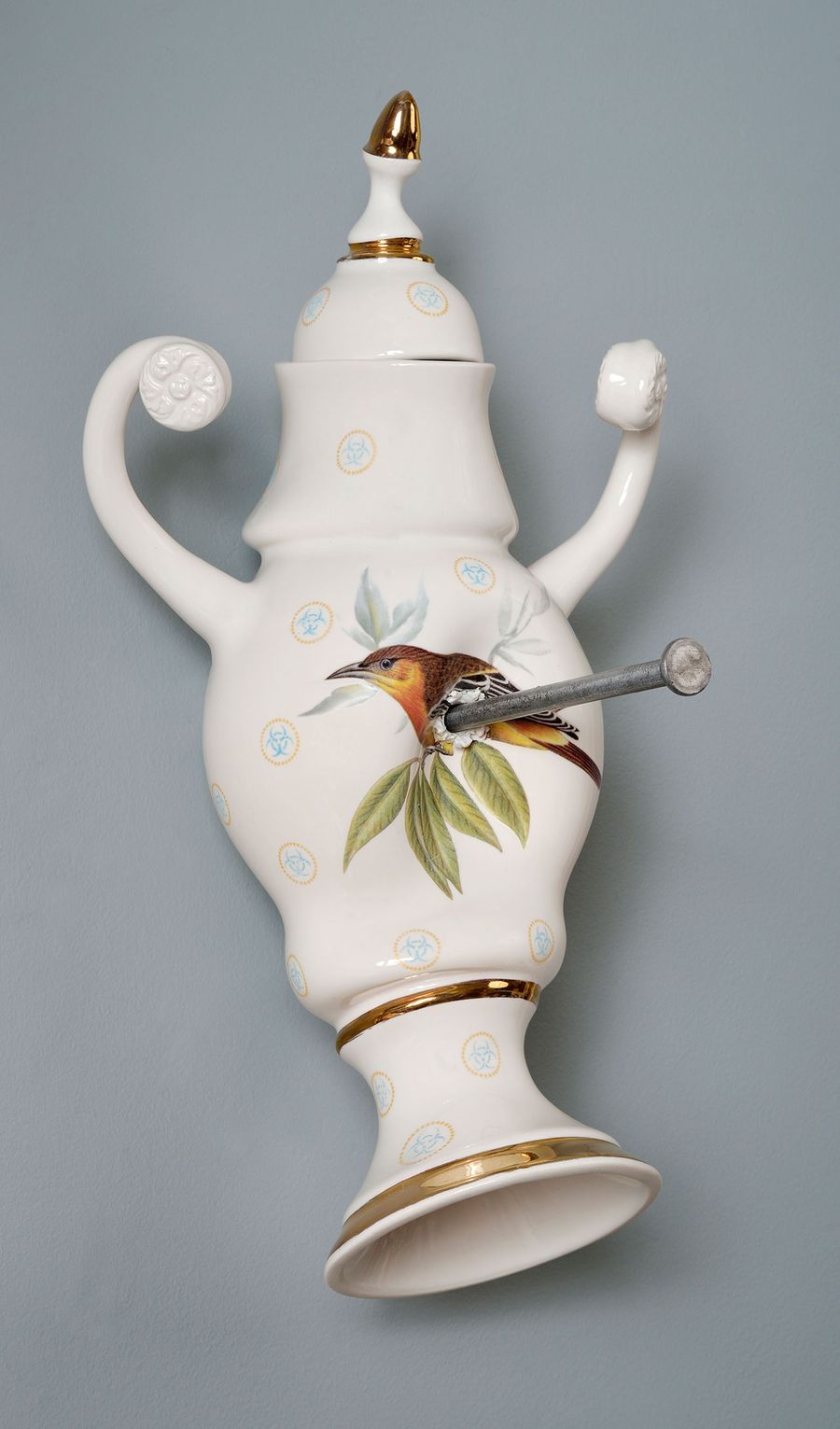
Craste Laurent, Ornithovase I, 2014/2015. Porcelain, glaze, gold, decals, nail. 43 x 23.5 x 24 cm.
Craste Laurent, Iconocraste au bat I, 2010. Porcelain, glaze, baseball bat. 63.5 x 27.1 x 63.5 cm. Claridge Collection.